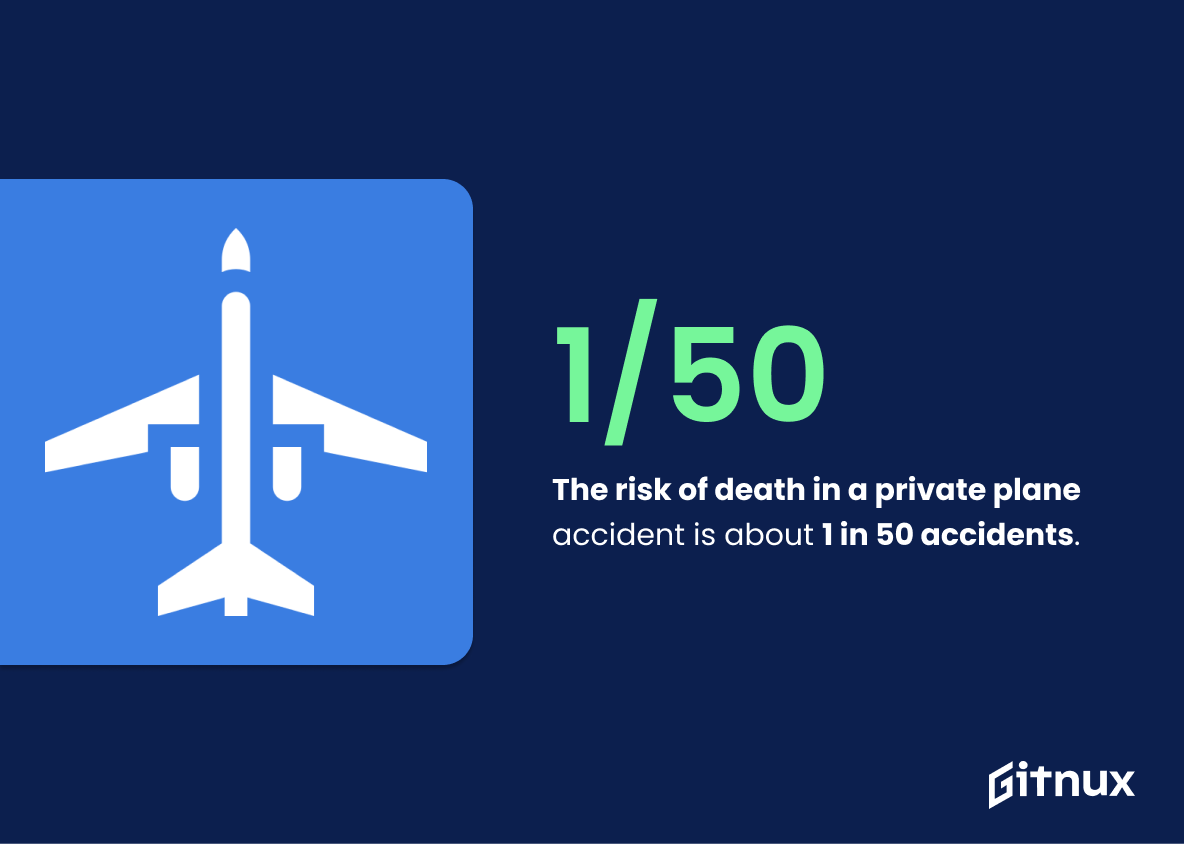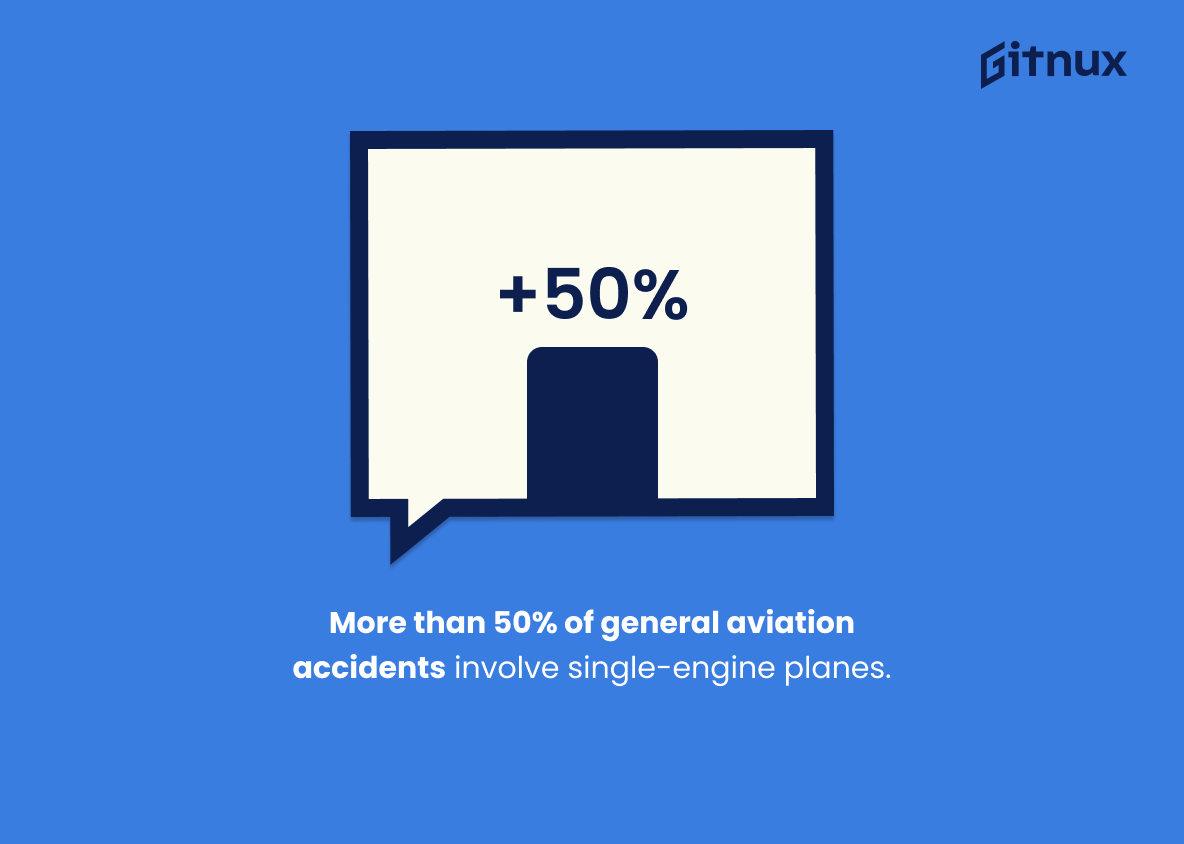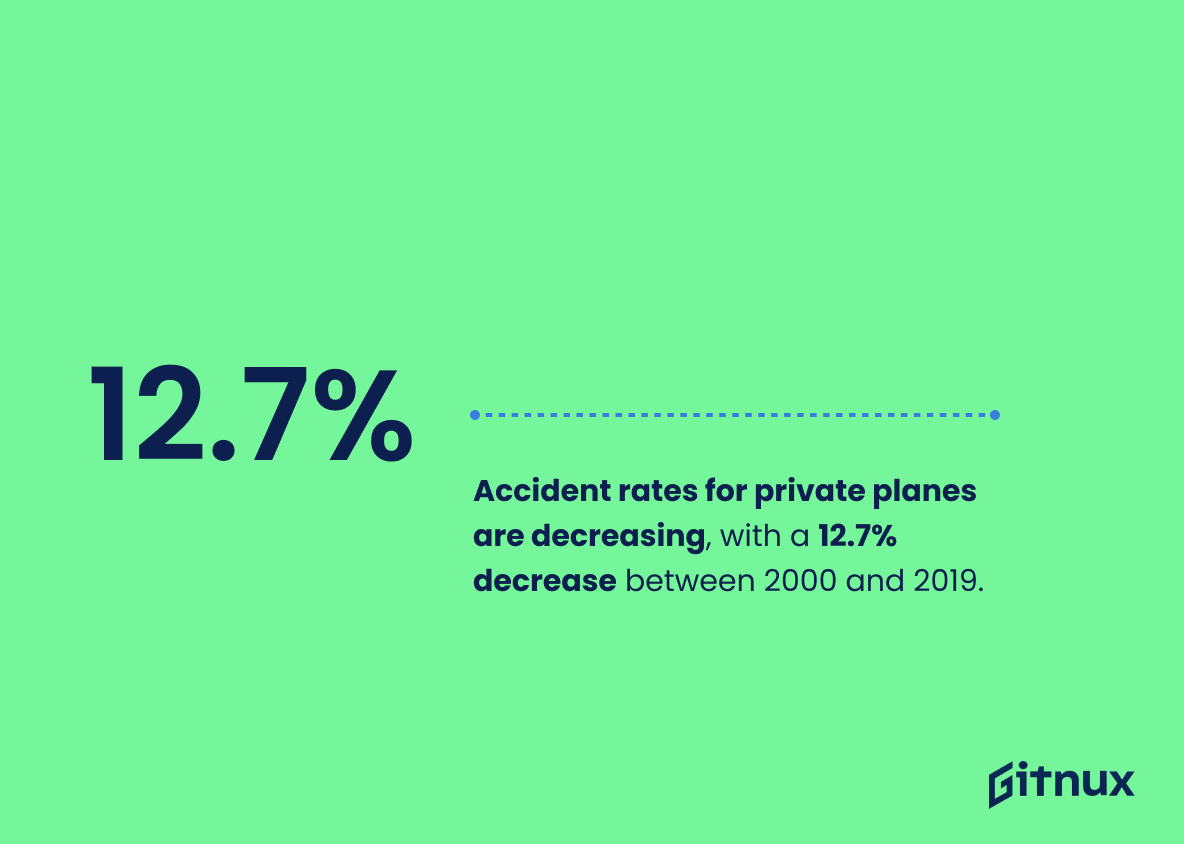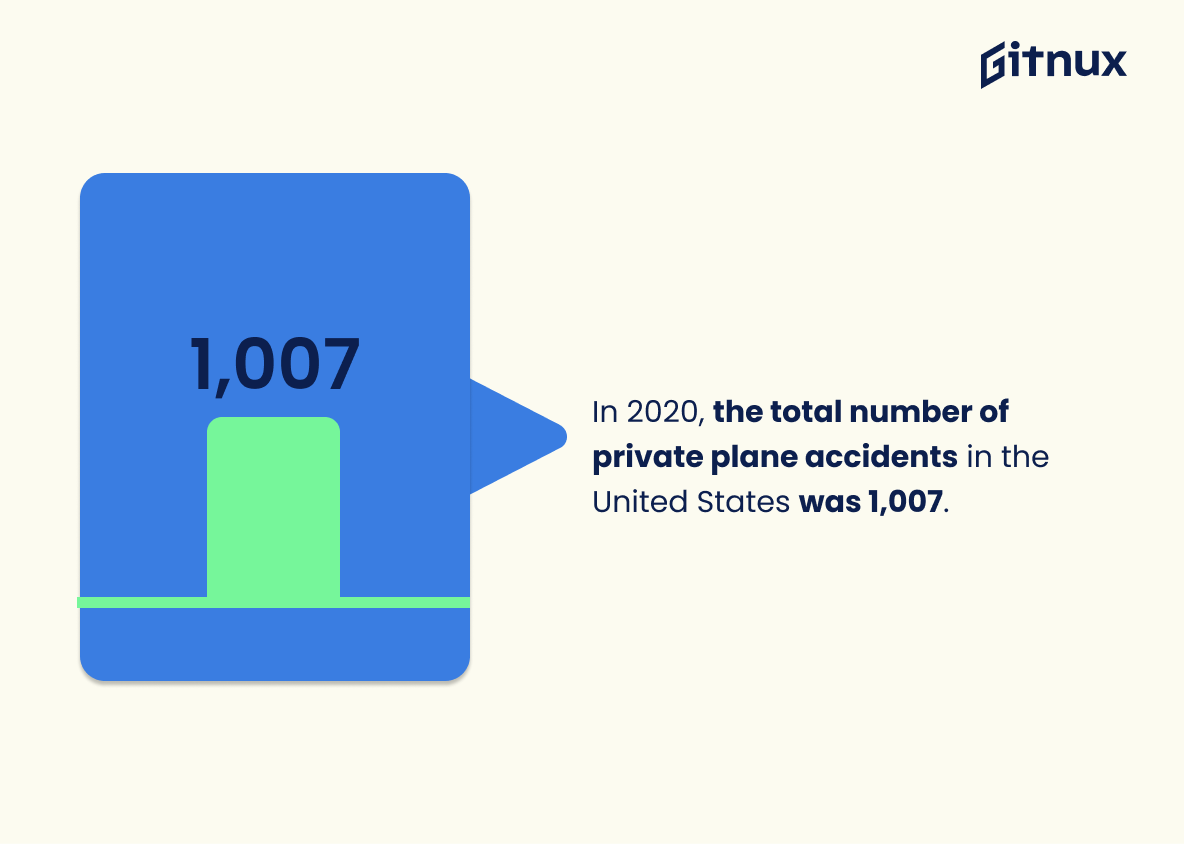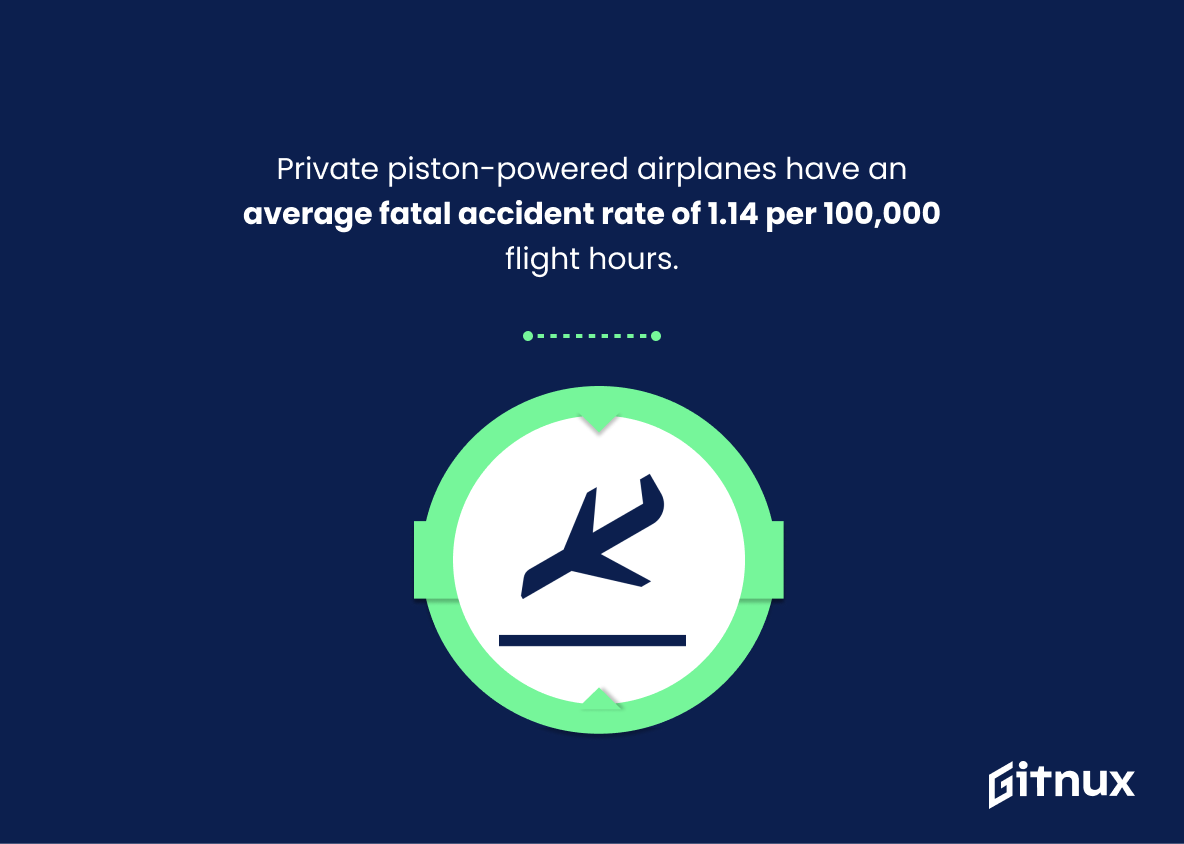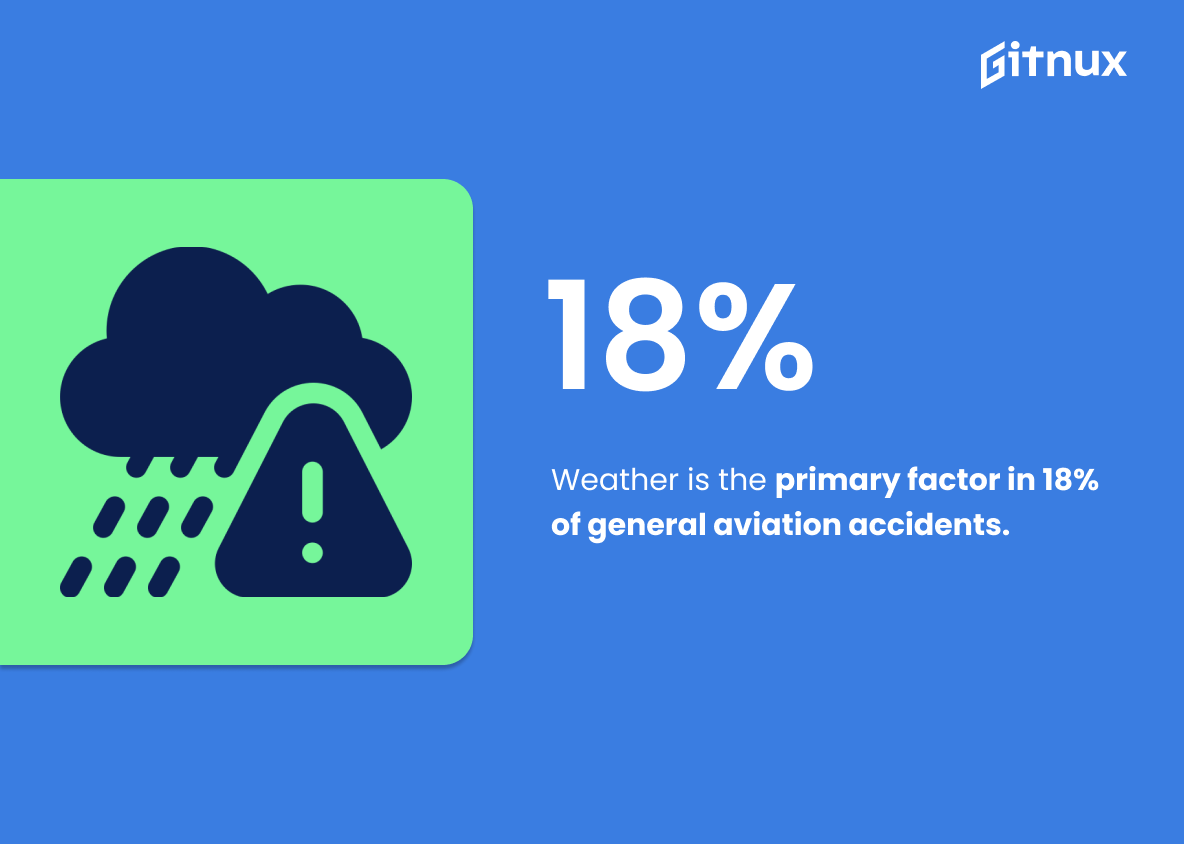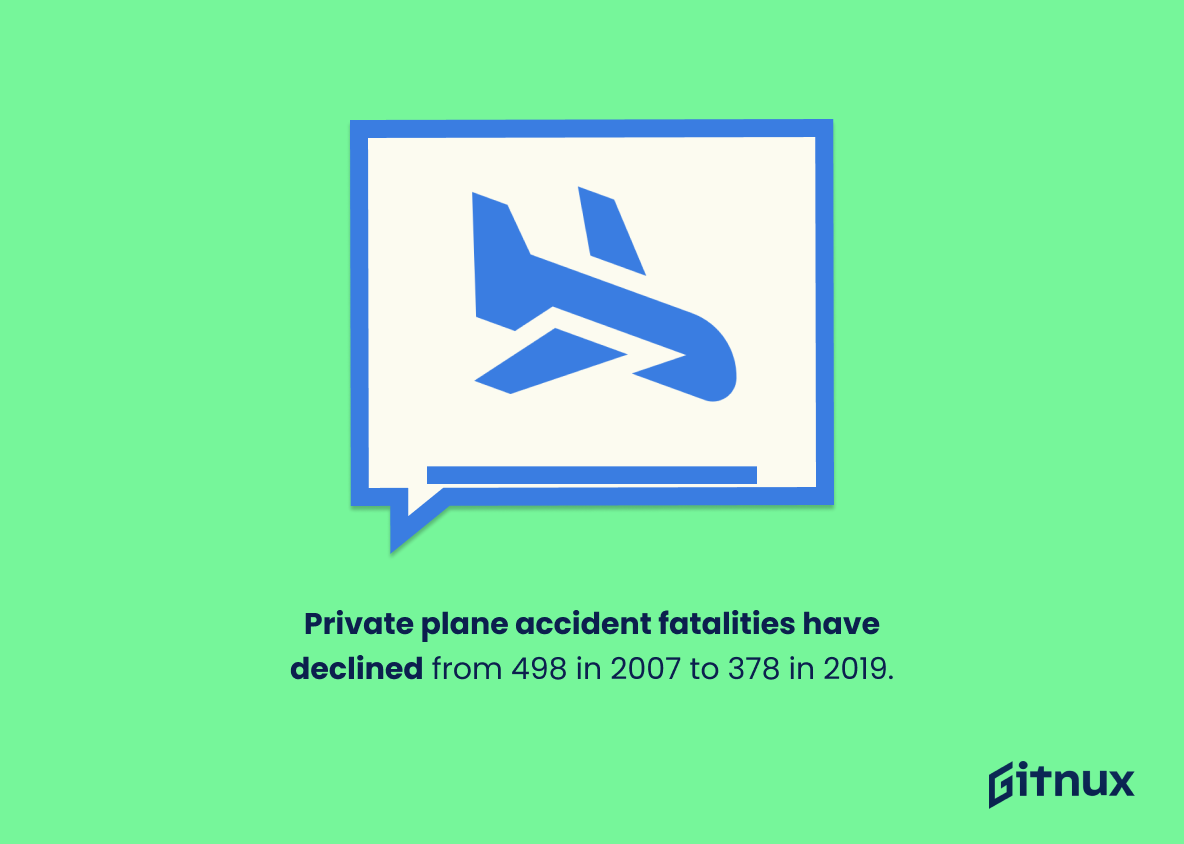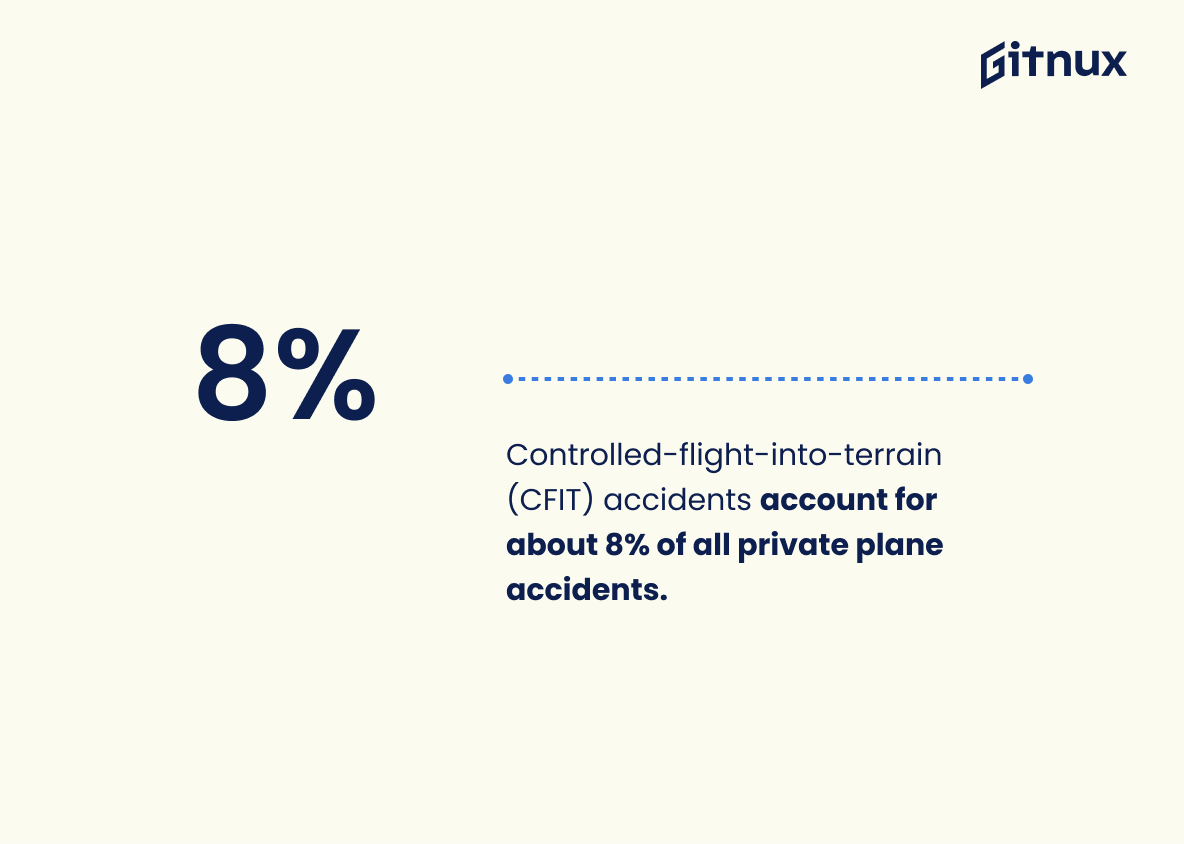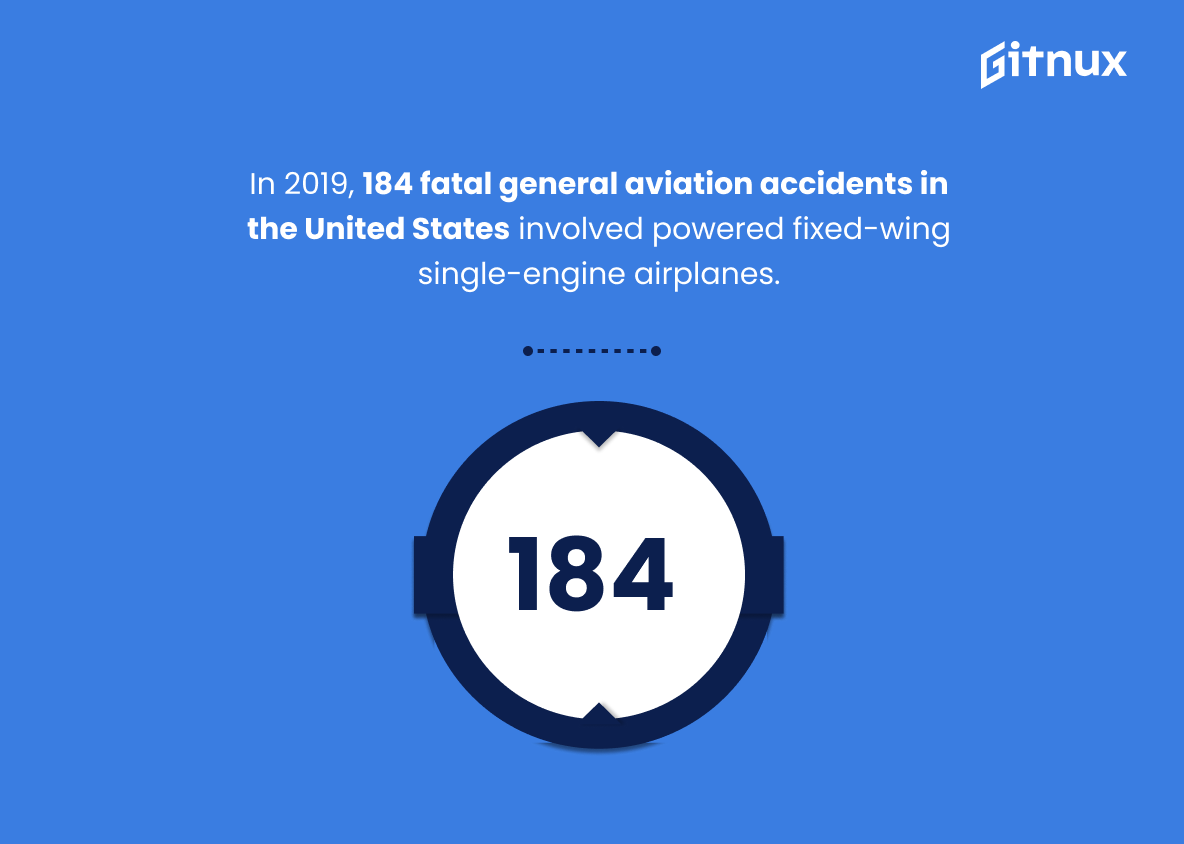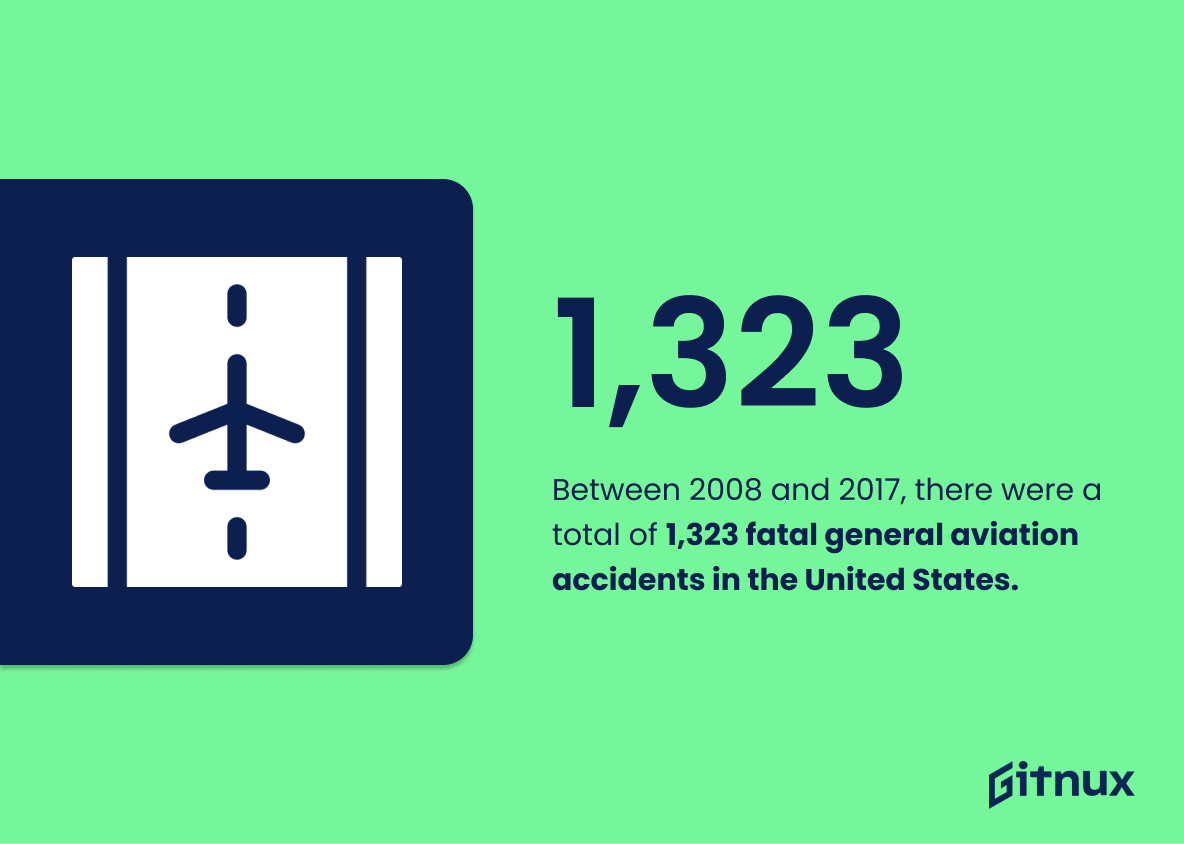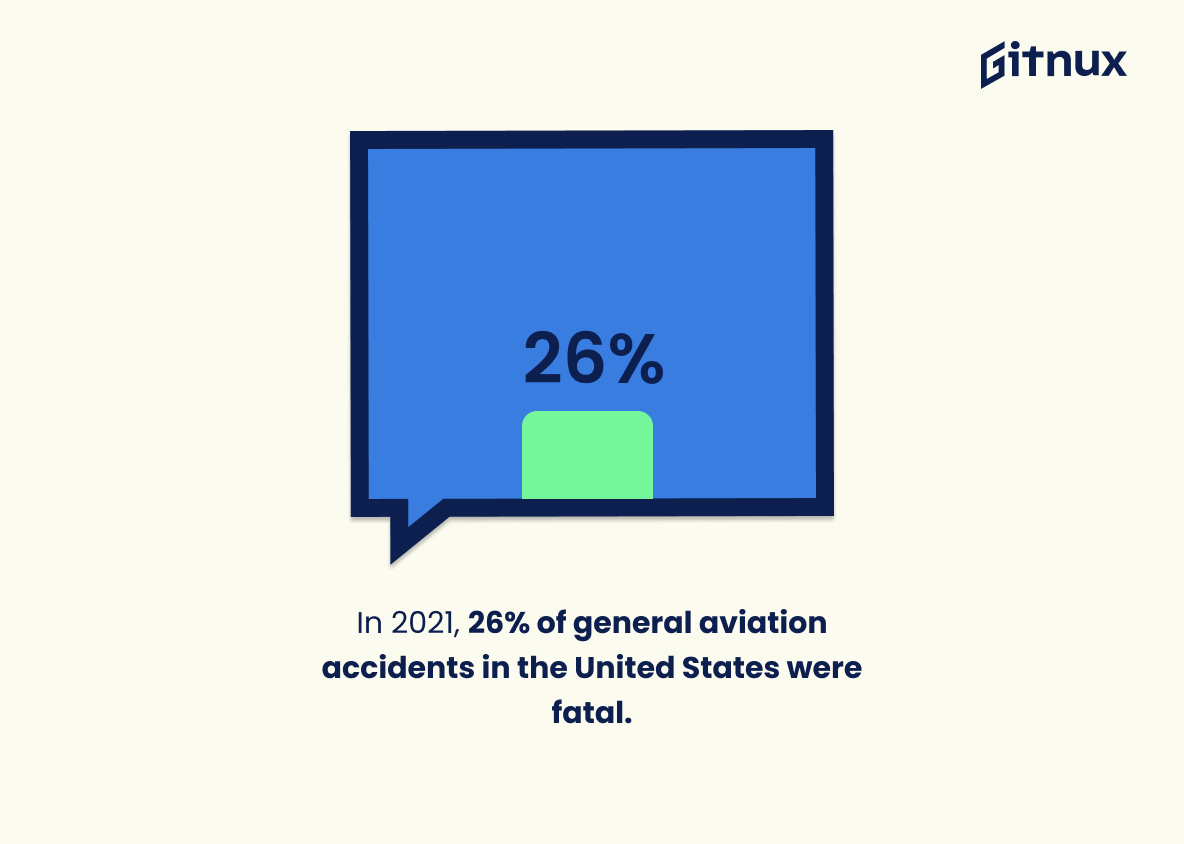Private plane crashes are a serious safety concern with alarming statistics. According to Business Insider, there are an average of 19 fatal accidents per year in private aviation. “General aviation industry” accounts for over 56% of these fatalities, and pilot errors contribute to around 75% of general aviation accidents. The risk of death in a private plane accident is about 1 in 50 accidents, and more than half involve single-engine planes.
Fortunately, accident rates for private planes have decreased by 12.7% between 2000 and 2019. In 2020, the United States reported 1,007 total private plane accidents, with an average fatal accident rate of 1.4 per 100,000 flight hours according to the Uncontrolled Airspace podcast. Flying Magazine’s article on Piston Fatal Accidents reported an even lower fatality rate of 1.14 per 100,000 flight hours for private piston-powered airplanes. Weather contributes to 18% of general aviation mishaps, as stated in AOPA’s report “Weather: Friend or Foe?”
In 2019, there were 230 fatal general aviation airplane crashes in the United States, of which 184 involved powered fixed-wing single-engine airplanes, resulting in 378 deaths. This number is significantly lower than the 498 deaths in 2007 due to controlled flights into terrain (CFIT). Nall Report findings for 2020 show 532 general aviation crash occurrences with a 26% fatality ratio, indicating further improvement since 1995 when up to fifty such events occurred annually among 10,000 registered General Aviation Aircraft.
In conclusion, although progress has been made in reducing the frequency and severity of private plane crashes, they remain dangerous activities that require utmost attention from pilots. Let’s take a closer look at the most important statistics about private plane crashes.
This statistic serves as a stark reminder of the potential risks associated with private aviation. It highlights the importance of taking safety precautions and understanding the risks of flying in a private plane. It also serves as a reminder that, while private aviation can be a convenient and enjoyable way to travel, it is not without its dangers.
Around 75% of general aviation accidents are caused by pilot errors.
This statistic is a stark reminder of the importance of proper pilot training and experience. It highlights the need for pilots to be well-versed in the operation of their aircraft and to be aware of the potential risks associated with flying. It also serves as a warning to those considering private plane travel, that the majority of accidents are due to pilot error and that safety should be a top priority.
Private Plane Crashes Statistics Overview
The risk of death in a private plane accident is about 1 in 50 accidents.
This statistic is a stark reminder of the potential danger of private plane accidents. It highlights the fact that, while private plane travel is often seen as a luxurious and convenient way to travel, it is not without its risks. This statistic serves as a warning to those considering private plane travel, and should be taken into account when making decisions about air travel.
More than 50% of general aviation accidents involve single-engine planes.
This statistic is a stark reminder of the dangers of flying in single-engine planes. It highlights the need for pilots to be extra vigilant when operating these aircraft, as the risk of an accident is significantly higher than with larger, multi-engine planes.
Accident rates for private planes are decreasing, with a 12.7% decrease between 2000 and 2019.
This statistic is a testament to the progress made in the safety of private planes, with a 12.7% decrease in accident rates over the past two decades. It is a positive indicator that the industry is taking steps to reduce the risk of crashes and ensure the safety of passengers and crew. This is an important point to highlight in a blog post about private plane crashes statistics, as it shows that the industry is taking the necessary steps to reduce the risk of accidents.
In 2020, the total number of private plane accidents in the United States was 1,007.
This statistic is a stark reminder of the dangers of private plane travel. It serves as a warning to those considering taking to the skies in a private plane, and highlights the importance of taking safety precautions when doing so. It also serves as a reminder of the need for continued vigilance in the aviation industry to ensure that such accidents are kept to a minimum.
Private piston-powered airplanes have an average fatal accident rate of 1.14 per 100,000 flight hours.
This statistic is a stark reminder of the risks associated with private piston-powered airplanes. It highlights the importance of taking safety precautions when flying these aircraft, as even a single fatal accident can have devastating consequences.
Weather is the primary factor in 18% of general aviation accidents.
This statistic is a stark reminder of the importance of weather in aviation safety. It highlights the fact that even with the most advanced technology and safety protocols, pilots must remain vigilant and take into account the potential risks posed by the weather when flying. This statistic serves as a reminder that weather can be a major factor in aviation accidents and should not be taken lightly.
Private plane accident fatalities have declined from 498 in 2007 to 378 in 2019.
This statistic is a testament to the progress made in the realm of private plane safety. It shows that the efforts to reduce the number of fatalities from private plane accidents have been successful, and that the industry is taking steps to ensure the safety of its passengers. This is an important point to make in a blog post about private plane crashes statistics, as it demonstrates that the industry is taking the necessary steps to protect its passengers.
Controlled-flight-into-terrain (CFIT) accidents account for about 8% of all private plane accidents.
This statistic is a stark reminder of the importance of proper pilot training and aircraft maintenance when it comes to private plane crashes. CFIT accidents, which occur when a pilot unknowingly flies an aircraft into terrain or an obstacle, are particularly dangerous and can be avoided with the right precautions. Knowing that CFIT accidents account for 8% of all private plane accidents highlights the need for pilots to be aware of their surroundings and to take the necessary steps to ensure their safety.
80% of fatal private plane crashes happen on the first flight of the day.
This statistic is a stark reminder of the importance of proper preparation and safety protocols before taking off in a private plane. It highlights the need for pilots to take extra caution when embarking on the first flight of the day, as the risk of a fatal crash is significantly higher. This is an important point to consider when discussing private plane crashes and the safety measures that should be taken to prevent them.
In 2019, 184 fatal general aviation accidents in the United States involved powered fixed-wing single-engine airplanes.
This statistic is a stark reminder of the dangers of flying in a powered fixed-wing single-engine airplane. It highlights the need for pilots to be aware of the risks associated with this type of aircraft and to take the necessary precautions to ensure their safety. It also serves as a warning to those considering flying in a powered fixed-wing single-engine airplane to be aware of the potential risks and to take the necessary steps to minimize them.
Between 2008 and 2017, there were a total of 1,323 fatal general aviation accidents in the United States.
This statistic serves as a stark reminder of the dangers of general aviation accidents in the United States. It highlights the need for increased safety measures and regulations to ensure that these accidents are minimized in the future. The 1,323 fatal general aviation accidents between 2008 and 2017 is a sobering statistic that should not be overlooked.
In 2021, 26% of general aviation accidents in the United States were fatal.
This statistic serves as a stark reminder of the potential danger of private plane crashes. It highlights the fact that, even in 2021, a significant portion of general aviation accidents in the United States resulted in fatalities, emphasizing the importance of taking safety precautions when flying.
In 1995, there were over 50 general aviation accidents per 10,000 general aviation aircraft; this number dropped to 30 accidents per 10,000 general aviation aircraft in 2019.
This statistic is a testament to the progress made in aviation safety over the past two decades. It shows that the number of general aviation accidents has decreased significantly, indicating that the industry has taken steps to reduce the risk of crashes. This is an encouraging sign for those who fly private planes, as it suggests that the risk of a crash is lower than it was in 1995.
Conclusion
Private plane crashes are a serious safety concern, with an average of 19 fatal accidents per year in private aviation. Over 56% of these fatalities come from the general aviation industry, and pilot error is responsible for about 75% of all general aviation accidents. The risk of death in a private plane accident is approximately 1 in 50 accidents, with more than half involving single-engine planes.
Fortunately, the crash rate for these aircraft has been decreasing over time, with a 12.7% overall decrease between 2000 and 2019. In 2020, there were a total of 1,007 reported private plane accidents in the United States, 230 of which were fatal, resulting in 378 deaths compared to 498 in 2007. Controlled-flight-into-terrain (CFIT) accounts for 8% of accidents, while weather contributes to 18%. Private piston-powered airplanes have an average fatality rate of 1.14 per 100,000 flight hours, while turboprop aircraft record an average of 1.67 per 100,000 flight hours.
Notably, 80% of fatal crashes occur during the first flights of each day. Additionally, out of 1,023 incidents involving fixed-wing single-engine airplanes last year, 184 resulted in fatalities. So far in 2021, the fatality rate stands at 26%. Despite some progress since 1995 when there were over 50 GA accidents per 10,000 GA aircraft, there is still much work to be done to ensure safer flying for everyone involved.
References
0. – https://www.aopa.org
1. – https://www.flightsafety.org
2. – https://www.flyingmag.com
3. – https://www.faa.gov
4. – https://www.ntsb.gov
5. – https://www.fars.nhtsa.dot.gov
6. – https://www.skybrary.aero
7. – https://www.ainonline.com
8. – https://www.businessinsider.com
